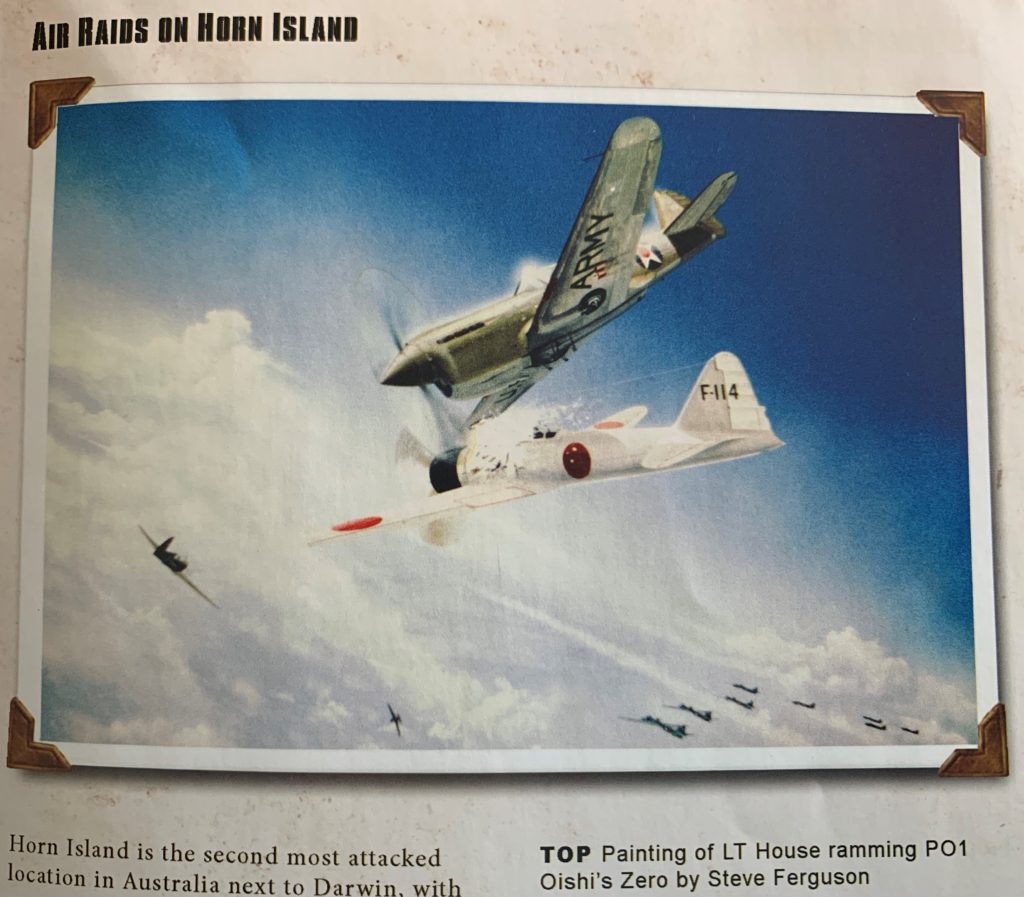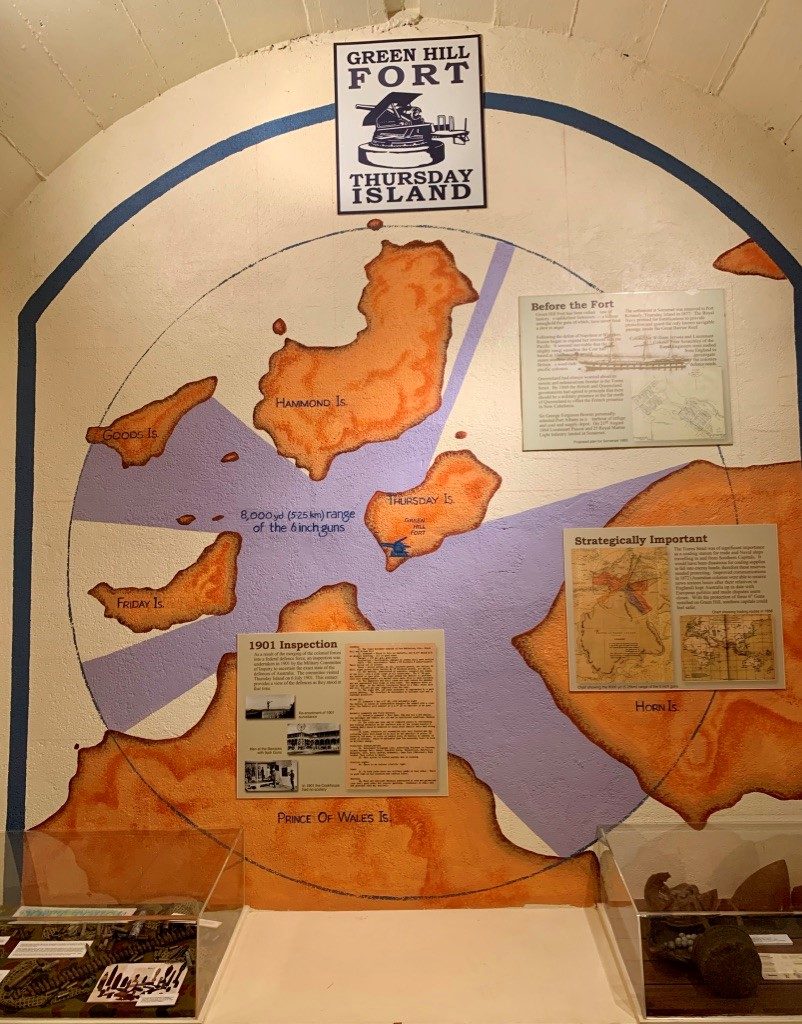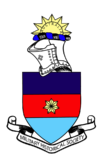Strategic Position of the Torres Straight Islands Group
By Neil Dearberg
Surrounded by crocodiles, sharks, strong currents and another ~270 islands, Thursday Island (referred to as TI) and Horn Island, part of the Torres Straight islands group, soak up tropical waters and blue skies just off the northwest tip of Cape York. No one swims here, not even the swarms of adventurous kids. What is little known is that since 1992 there has been a Torres Straight Islands Nation, part of Queensland therefore Australia, when then Governor-General Bill Hayden presented their national flag. Australia has three national flags (Australian, Torres Straight and Aboriginal) and 25 official flags (Google them). This nation sits amidst the overlapping waters of Papua New Guinea and Australia where the locals molest the azure blue waters in an endless quest for fish and sea life and monitor the ever-present world shipping that passages the Straight.
At the beginning of WW2 TI was the population centre of the Group. Today, it is the capital and centre of government, but is tiny compared with surrounding Horn, Wednesday, Prince of Wales and Hammond Islands. It has no natural water so pipes it from the much larger Horn; it has no airport so Horn is its ‘feeder’ airport; has a shallow boat harbour so ferries bring bulk supplies from cargo ships that dock at Horn.
But back to the war. A northern airstrip was needed for allied air forces to counter a Japanese onslaught. After inspecting sites at Somerset (on the east coast of Cape York) and TI, Horn was selected as it had size for two runways. Built by the Main Roads Dept and Civil Construction Corps, the runways were completed in January 1942. Regrettably, the runways were only long enough for the two engine Australian aircraft but too short for the four engine American B-17 Flying Fortresses. As a result, a larger airstrip was built at Bamaga on the western side of Cape York mainland.
The Japanese didn’t take long to realize that if they held the airstrip on Horn Is their aircraft could bomb Australian targets as far south as Melbourne. The allies realized if they continued to hold it they could attack Japanese targets in PNG, towards Malaya and shipping in the Coral Sea.
Horn Island
Horn was populated mainly by Filipinos and Malays while most of the Torres Straight Islanders and Aborigines lived on TI that soon became a garrison town of army and navy personnel. In early 1942 with invasion imminent, the civil population of TI, Hammond, Prince of Wales and Horn were evacuated to safer southern parts – only garrison and airfield personnel remained.
The Americans began arriving with their B-17 Flying Fortresses and B-25 Mitchell bombers in May 1942, along with their 104th Anti Aircraft Unit. In October that year the 157th Aust Light Anti-Aircraft Battery arrived with their 40mm Bofors to replace the 104th. Also arriving at that time was the 34th Aust Heavy Anti-Aircraft Battery with 3.7inch guns (see photo below) in four pits dug with pick and shovel in the mud and slush of the wet season. Gun-pits, magazines and control room have been excavated and are visible on tours of the old wartime leftovers. Excavated too are numerous machine gun posts and slit trenches into which the defenders would scramble during Japanese air raids.
The Americans immediately flew in their Kittyhawk fighters to ward off the Zeros. By 1944 they landed a P47 Thunderbird, their biggest single engine fighter – but the short runway resulted in a failed takeoff that had it crash into parked Kittyhawks…oops. By the end of 1942 there were 5,000 troops on Horn Is. To assist with the wounded, tropical living, diseases and medical welfare the 1st Aust Camp hospital was set up in November 1942. With one doctor, nine nurses and 20 other ranks as orderlies, a 36-bed hospital attended Australian and American airmen and soldiers as well as some evacuated from New Guinea.
Sadly, due to the short runways, several B-17s crashed with loss of life and injuries while attempting landings on Horn. Combat aircraft and resupply aircraft from ‘down south’ all used this airstrip.
To help defend it in their homelands, men of the Torres Straight volunteered to form the only indigenous unit to serve in the Australian Army – the Torres Straight Light Infantry Battalion (TSLIB). The 880 volunteers of 1942 was the highest rate of enlistment per head of population, were paid just one third of a ‘white’ soldier, couldn’t vote and their dependants received no allowances, yet continue to serve they did. Today, the 51st Far North Qld Regiment, regular and reservist soldiers, based on the TSLIB continues to provide reconnaissance and surveillance in support of border security in FNQ.
Air Raids on Horn Island
The first Japanese air attack on Horn Is on 14th March 1942 included 12 Zeros and eight Betty Bombers. Horn Island became the second most bombed part of Australia after Darwin. TI copped a few bombings, but not as many as Bamaga’s airfield on the Cape. There are now well-established museums that tell their stories at Green Hill Fort on TI and on Horn Is.
During 1942 and 1943 approx 500 bombs were dropped on Horn Is, damaging or destroying fuel points, hangars, aircraft, the runways and buildings, while inflicting some deaths and casualties.
At night, the 74th Searchlight Battery would light up the skies. Day and night, the 36th Radar Station kept watch for approaching aircraft. An old radar tower is still visible near the mouth of the Jardine River.
Japanese bombers and Zero fighters would attack day and night. In one of the first engagements Lt House flying his American Kittyhawk fighter had shot down a Zero piloted by LTJG Nobuhiro Iwasaki. He turned to see his Sqn Comd Capt Bob Morrisey being attacked by PO1 Genkichi Oishi. House attacked Oishi but his guns jammed. Unfazed, in a split-second decision, House rammed his wing into the cockpit of Oishi causing him to crash into the sea (see photo below) – House made it back to land, with some difficulty. For this effort he was awarded the first of several Distinguished Flying Crosses.
What Is There Today
Thursday Island is a pleasure to visit. Clean, tidy and welcoming Torres Straight Island people and now local non-indigenous residents are sprinkled with Aboriginals. A land mass of 5 square kms it is easy to get around and explore. Get off the ferry from Horn and join the bus tour to Green Hill Fort for a history lesson and display of well preserved artefacts and explanatory panels to see the rich wartime events.
Horn Island is larger and more developed. Here is a great bus tour of the airfield and wartime remainders of pits, trenches, gun sites and command rooms. Then spend an hour in the museum to see the splendid displays and panels to get the full picture of what happened here.
Here is another example of Australia’s military history that played such a significant part of our mainland defence, yet so little has been told. The indigenous service men and women were a vital part of our northern defence, as they still are in border protection, surveillance and reconnaissance.

Panel in Green Hill Fort on Thursday Island

3.7” gun resurrected on Horn Island

